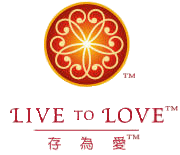EXPLANATION OF LOGO
 The five hearts represent love from five directions, coming together in unity and harmony. The orange light in the centre represents the sun (of hope), with its glow of sunrays gradually growing to become red, the colour of strength and energy. This symbolises a heart full of love that illuminates from self to others, with the thriving selfless energy to extend love in the form of humanitarian activities to those beings in our world. The external circle which is orange in colour symbolises the perfection of the beneficial activities that are carried out with fearless confidence and definite success.
The five hearts represent love from five directions, coming together in unity and harmony. The orange light in the centre represents the sun (of hope), with its glow of sunrays gradually growing to become red, the colour of strength and energy. This symbolises a heart full of love that illuminates from self to others, with the thriving selfless energy to extend love in the form of humanitarian activities to those beings in our world. The external circle which is orange in colour symbolises the perfection of the beneficial activities that are carried out with fearless confidence and definite success.
LIVE TO LOVE
Tibetan Buddhist masters and followers have always been perceived very much as a closed community, not very much involved with the communal happenings. “Live to Love” is an idea which has been in my mind for many years. I feel that both the masters and the followers of our 800-year-old Drukpa Lineage must now get ready to expand and extend the idea of “Live to Love” to everyone in their individual communities, irregardless of faiths, nationalities, cultural backgrounds and other conditions. We do not live in this world independently on our own, and the practice of Bodhicitta essentially requires us to interact with other people and other beings in this universe.
While we continue to engage ourselves in formal spiritual practices, such as group and solitary retreats, mantra recitations, prayers and all other different formal practices, to strengthen our mind and to develop our Bodhicitta, we should also get ourselves ready to face the world we live in with the love that we have developed through these practices, sometimes on our own and sometimes with the support of our gurus and friends. When natural disasters happen in our communities, where are we? When our living environment is increasing facing all kinds of threats, what are we doing to help?
We live to love, and we don’t live to hate. It is time to extend this energy of love to everyone in our world and every sentient being that we can imagine. Some people find formal and serious practices very easy to be carried out, but when it comes to interact with others, they are lost and become very frustrated. I hope “Live to Love” will be able to help everyone, at least those connected with me and my lineage, to open up themselves and to share their love and happiness with all others connected with them.
Whether this little vision of mine will come into materialisation, it all depends on you, my colleagues, my friends and students. I cannot do this on my own. Therefore, although Druk Foundation Ltd. introduced this idea of “Live to Love” on my behalf in Hong Kong during my birthday celebration in March, this year, I want to launch this in a big way in Ladakh, where the blessings of our forefathers are still active and where this idea of “Live to Love” is very much needed, because of Ladakh’s physical conditions and the insufficient resources that are encountered by many Ladakhi villagers and people.
THE FIVE DIRECTIONS
Although we are a very small community right now, we can start bringing to life this idea of “Live to Love” by interacting with the people and beings around us, and by being “Messengers of Love” to any being that comes into contact with us. Sharing with others and expanding our inner love outwardly to others will nourish our own lives.
“Live to Love” is actually not a new idea. Many Mahayana masters are already doing so in their own communities and countries. Catholic and Christian communities are most notable for this.
To me, with our existing resources, we can start with the following categories, in the practical sense. Some of my colleagues may be able to lead our small community to start some of these beneficial activities, first in a small way, and then see what happens:
– 1) Education – such as building schools (Druk White Lotus School), and eventually being able to provide scholarships
– 2) Medical Facilities – such as the various clinics in the Himalayas, providing the basic medical facilities for the needy and cooperating with other hospitals for relief assistance in other areas of medical expertise
– 3) Relief and Aids – such as providing human resources and other resources for relieving those affected by disasters, whether natural or manmade
– 4) Heritage – such as providing support to preserve the spiritual and cultural heritage of our 800-year legacy, and gradually, depending on our resources, extending this to include others
– 5) Environment – such as educating our communities on environment preservation and waste management
– An Idea from The XII Gyalwang Grukpa




